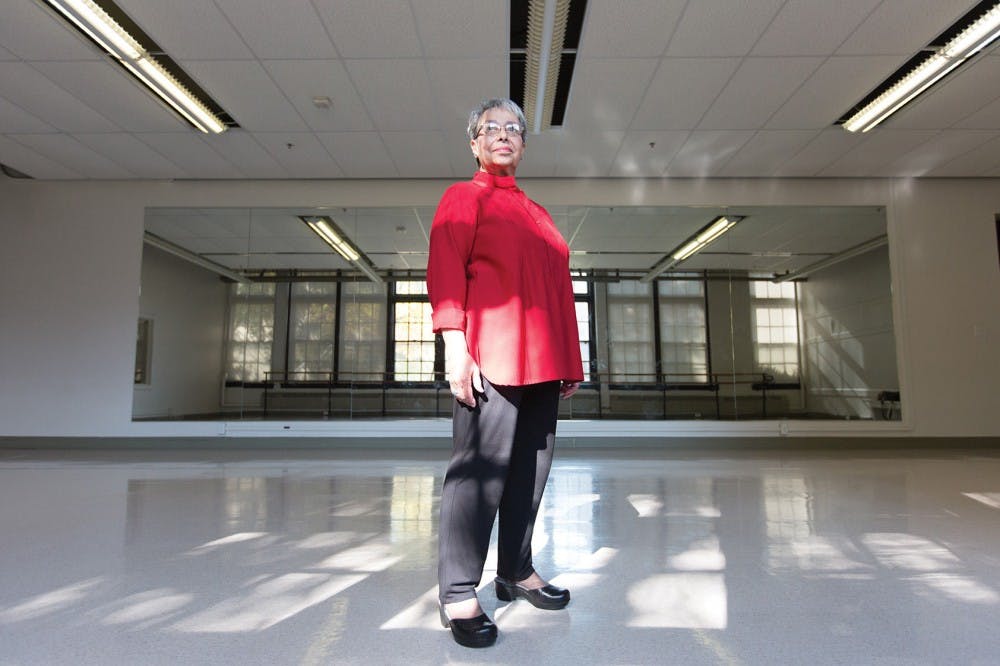The most prestigious award for faculty members at Ohio University is traditionally bestowed to white men
Gladys Bailin-Stern, a dance professor, was the first woman to receive Ohio University’s most prestigious honor for faculty: the Distinguished Professor Award.
That was in 1986, and nearly 30 years later, she’s the only surviving female recipient.
The second and last female to receive the honor, Ursula Belden, a distinguished professor of theater, died in 2009.
Only two women and four non-white men have been named distinguished professors since the award was founded in 1958, which may in part be due to the makeup of the university’s faculty.
“I really don’t understand it except that I think we live in a male-dominated culture,” said Bailin-Stern, who’s now retired. “I think it’s gotten better (at OU), but it still needs improvement.”
The Distinguished Professor Award, which now recognizes one faculty member per year, is based on exceptional research, scholarly or artistic achievement and conscientious teaching, according to OU’s website.
Candidates must also have tenure and at least five years of service at OU.
When the award is given, recipients earn a continuing salary stipend, paid research leave, travel support and the ability to give an undergraduate student a year’s full-tuition scholarship.
“The thing is, we are here at Ohio University, and I don’t think that the racial makeup of the group of the distinguished professors is much different than the racial makeup of the university as a whole,” said Charles Smith, who was named a distinguished professor of theater in 2010 and is the only African American to receive the designation.
Of 887 full-time faculty members on the Athens campus during Fall Semester 2013, approximately 73 percent of individuals identified as white, according to OU’s Office of Institutional Research.
Slightly more than 4 percent of individuals identified as being African American.
Broken down by gender, males account for roughly 60 percent of full-time faculty members.
Bailin-Stern said she was surprised to receive the honor at the time because the award tended to go to men in the hard sciences, not women in the fine arts.
Belden, the only other female recipient, was nationally renowned for set design she had done on Broadway and was named a distinguished professor 14 years after Bailin-Stern in 2000.
The recipient pool has been completely male-dominated ever since.
“There have been women nominated every year that I’ve been involved,” said Mark Halliday, a distinguished professor of English and the current chair of the distinguished professors committee. “The whole group is very conscious that we have kept choosing a male candidate, and everyone would love it if we could choose a female candidate.”
The distinguished professors committee, which changes yearly based on the most recent award recipients, oversees the nomination process — an undertaking some have said may deter strong candidates from accepting a nomination.
During his tenure as chair of the committee, Smith said he often had to encourage others to accept a nomination.
He even needed convincing prior to accepting his own nomination.
Candidates must obtain 10 letters of recommendation from external experts in their field, among other tasks.
The required time commitment can ultimately make worthy candidates pass up the position, Bailin-Stern said.
Halliday acknowledges that not all award recipients are diverse, but it’s not deliberate.
“It’s incredibly difficult in a culture that still has traces of racism throughout for a black person, to commit early … to an academic career and have the financial resources to stay with it and get the kind of educational support that you need all the way through,” he said.
Minorities were not a large part of higher education until the 1980s and ’90s, said Richard Vedder, a distinguished professor of economics emeritus.
“It takes a long time from the time you decide you want to become a professor to the time you are considered qualified or have the time to build up a national reputation,” he said.
Award recipients tend to be in their 50s or 60s, having decades of research and teaching experience.
“(A female recipient) would need to be a woman who has had a fairly substantial career, and that means the fewer women that were here 20 years ago, the fewer (can get the award),” said Beth Quitslund, Faculty Senate chair and an associate professor of English.
Nominations for the 2015 distinguished professor are open to all current OU faculty and will be accepted until Feb. 15. A public announcement of the committee’s final choice will be revealed at graduate commencement in the spring.
@dinaivey
db794812@ohio.edu






